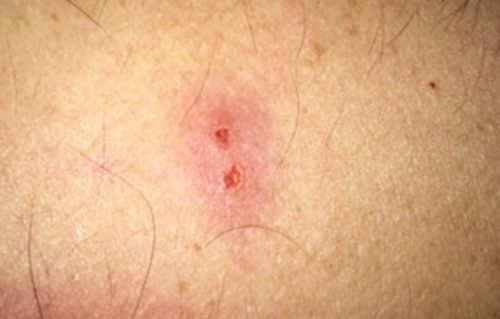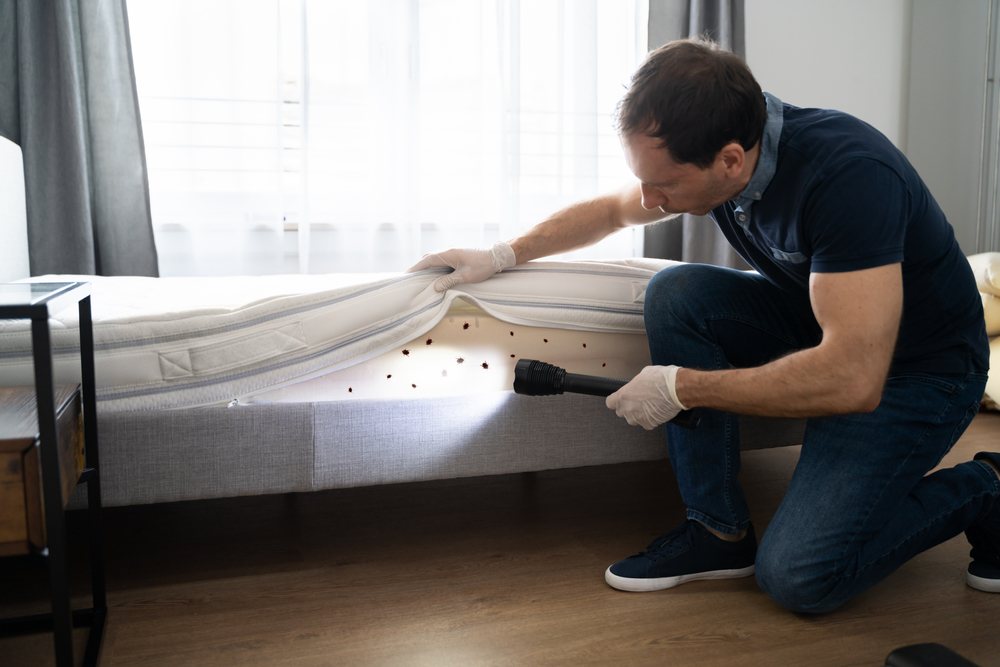Dealing with insect bites can be stressful.
They irritate the skin and can take weeks to heal.
And ultimately it’s hard to determine what type of insect actually bit you.
This confusion isn’t entirely unwarranted…
As bites from common insects like spiders and bed bugs actually share several physical similarities.
But beneath the surface… the differences are more apparent.
Here we will dive into the similarities specifically between bed bugs and spider bites.
We will address key questions toward discovery, diagnosis, and household methods for treatment.
Page Contents:
Similarities Between Bed Bugs Bites & Spider Bites
Whether you’ve been bitten by a bed bug or a spider, the initial symptoms are typically similar.
They all relate to mild skin irritation around the area of the bite.
Bed bug bites and spider bites will also produce some swelling. This is caused by the immune system producing histamines, anti-allergens that attack foreign bacteria carried by the bugs.
Redness of the skin is another common symptom of bug bites. It is often simultaneous with swelling, and is another component of the body’s immune response to dealing with bug bites.
As the swelling goes away, the skin will slowly return to its natural color.

Bug bites are also notoriously itchy. Parasitic insects, like bed bugs, inject antihistamines and anticoagulants into the bloodstream during feeding sessions. Once the antihistamines wear off, the body begins producing histamines to clear the bacteria.
On average, these symptoms will clear after 1 to 2 weeks. Antibiotics and other treatment options can aid the healing process, clearing up bug bites in only a few days.
Differences Between Bed Bugs Bites & Spider Bites
At first glance, it can be almost impossible to distinguish a bed bug bite from a spider bite. However, both bite marks have distinct patterns that can be identified from closer observation.
If you notice multiple bites in a row or in a linear or zigzag pattern, then it’s likely you were bitten by a bed bug.
Bed bugs often feed in groups, and sometimes a single bed bug can bite multiple times.

Spiders, in contrast, will only ever bite once.
Spiders don’t feed on humans like bed bugs do, and many spider bites are even accidental on the spider’s part.
Spiders also leave tiny puncture marks, indicating where they broke the skin. While these marks are rather small, they can be seen with the naked eye.

Bed bug bites don’t have any visible puncture marks. Instead, they look like red dots along the skin.
(Roughly ¼ to ¾ inches in diameter).
Spider bites can also have much more serious symptoms than bed bugs. This is especially true in cases of spiders with venom that’s lethal to humans. Bed bugs are incapable of producing venom, and thus their bites do not create symptoms that lead to hospitalization.
While a bed bug bite can lead to infection, this only occurs in rare cases where the skin is repeatedly broken due to itching. Constantly scratching a bite keeps the wound open, while also spreading the infection to previously unaffected areas of skin.
Note – There are instances where bed bug bites lead to death, but this is usually because of an allergic reaction that exacerbated an existing underlying condition.

There are roughly 3,400 species of spiders in the United States. Of these, there are only 2 whose venom is potent to humans: the Black Widow and the Brown Recluse.
Both species are commonly found in the Western United States.
Black widow venom affects the nervous system, so most people bitten by these spiders experience muscle pain or tremors. Flu-like symptoms, such as nausea, vomiting, and difficulty breathing may also occur.
People who are bitten by Brown Recluse spiders may display similar symptoms to a Black Widow bite. However, Brown Recluse venom is more dangerous due to the venom causing skin damage.
Once the venom sets in, the skin around the bite starts to discolor, turning purplish-blue in color with a white ring surrounding the area.
This discoloration is the earliest indication of a skin ulcer, which can grow larger if left untreated.
How Can You Tell the Difference Between a Spider Bite and a Bed Bug Bite?
There are multiple signs that can clue you in on whether you were bitten by a bed bug or by a spider.
These signs are indicative of the bug’s overall behavior patterns.
- Bite Location: Bed bugs often target the upper torso, such as the head, neck, shoulders and arms. These are the easiest places for them to feed, since bed bug colonies mainly live at the head of the bed. Spider bites can happen anywhere on the body.
- Number of bites: As mentioned earlier, bed bug bites often appear in some sort of pattern, like a row or a zigzag line. While this can indicate multiple bed bugs biting you, it’s also possible that one-bed bug attacked you multiple times. Spiders will only bite once, mainly if they’re startled or scared.
- Timing: If you wake up with multiple bite marks on your body, then you can reasonably conclude that you’re experiencing a bed bug infestation. Bed bugs feed late at night, when a person is sleeping. By morning, the bite marks will have formed. Spider bites can happen at any time of day.
Do Bed Bug Bites Look Like Spider Bites?
It’s easy to mistake a bed bug bite for a spider bite.
Despite sharing symptoms, however, the two have different appearances.

Spider bites will have a distinct puncture mark in the middle of the bite. Many spiders have small fangs, so the puncture won’t be very deep.
Though you’ll still be able to see the bite mark with the naked eye.
Bed bug bites don’t leave a visible puncture mark. Rather, they’ll appear as a cluster of inflamed bumps along the skin, indicating where the bed bugs were feeding.
These bumps can range from ¼ to ¾ inches in diameter.
For more examples of common insects that are mistaken for bed bug bites, you can check out our article on Bed Bug Bites vs. Flea Bites.




